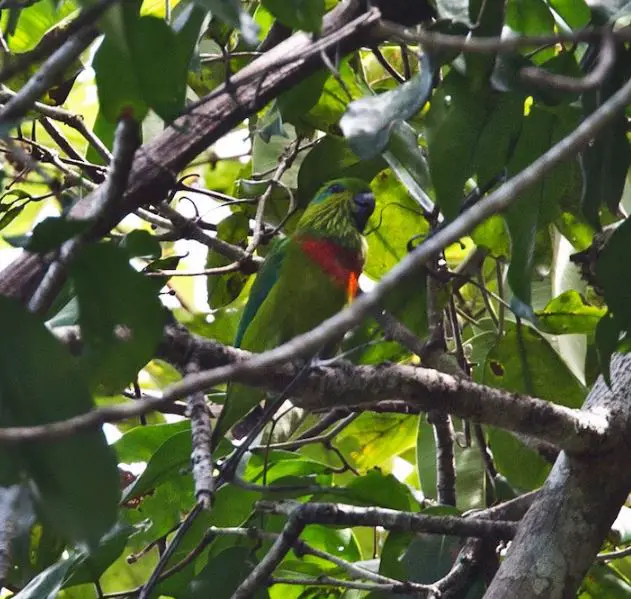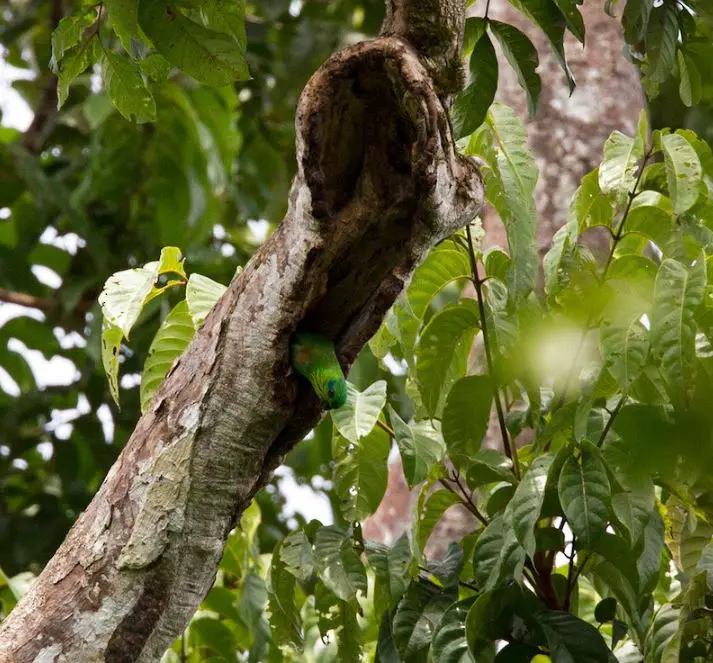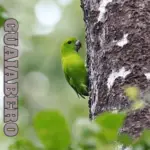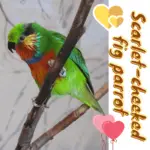
Salvadori’s Fig Parrot 19 cm; 118 g. Forehead bluish-green shading to the bright green crown, yellow on nape; elongated facial feathers golden yellow, blue behind eye;
undersides yellowish-green except for a broad orange-red patch on breast; back, wings, and tail dull green, with innermost tertials edged orange.
Salvadori’s Fig Parrot Female has a bluish crown, greenish-yellow face, and pale blue patch on her breast. Immature duller than female.
Systematics History
Monotypic.
Subspecies
Monotypic.
Distribution
NW New Guinea from E shores of Geelvink Bay E to Cyclops Mts.
Habitat
Lowland forest and edge, up to 400m.

Diet and Foraging
Salvadori’s Fig Parrot is Seen attending a fruiting fig tree.
Sounds and Vocal Behavior
Salvadori’s Fig Parrot Calls include a shrill “screet!” and a short metallic high-pitched “ksit!”. When perched, also gives lower-pitched, more grating calls and several conversational chirrups.
Breeding

Record of possible nest-site prospection in a hole in a tree
Conservation Status

VULNERABLE. CITES II. A BirdLife “restricted-range” species. Locally common and parts of the range are remote and inaccessible, but extensive logging and land clearance in the region, owing to Indonesia’s transmigration policy, coupled with extensive trapping for the cagebird trade, are judged to be causing a rapid and substantial decline in numbers.
However, a total of only 1582 birds were exported from Indonesia in the period 1985–1990, which was not judged to prejudice the security of the species; nevertheless, its commercial importation into the EC from Indonesia was prohibited in Jul 1987.




















